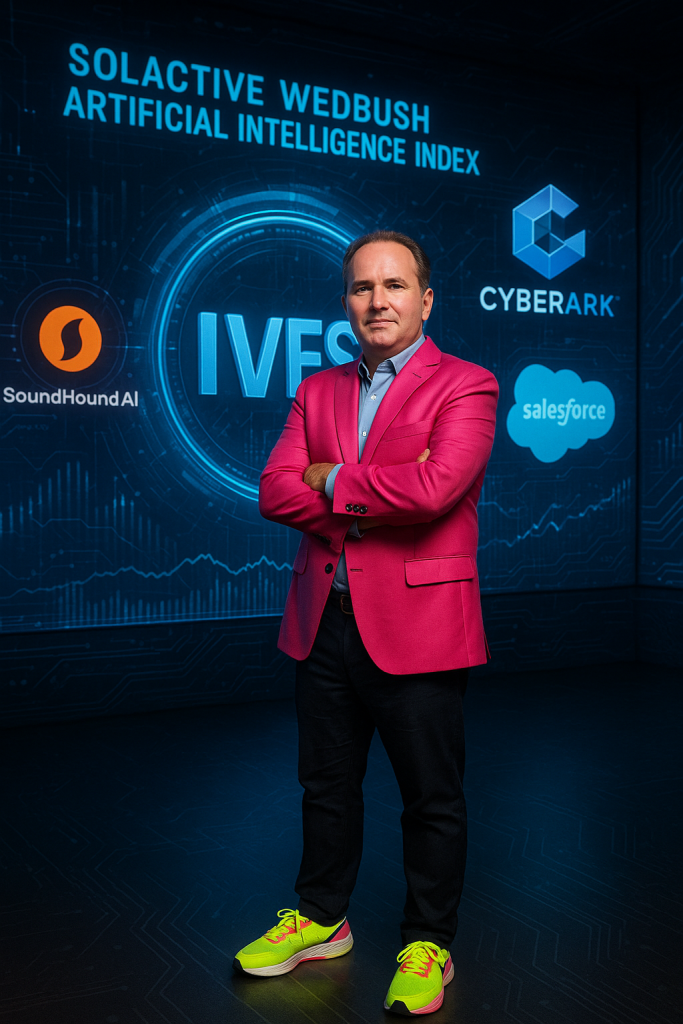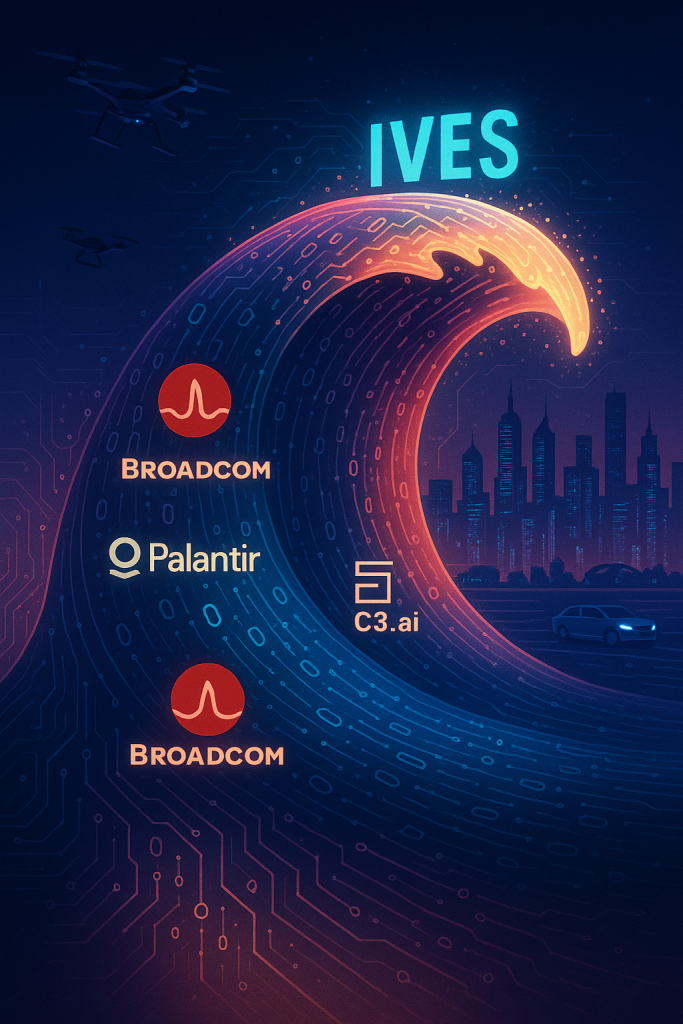Wedbush Securities, a prominent Los Angeles-based investment firm, has made a significant splash in the financial world with the launch of its inaugural exchange-traded fund (ETF), the Dan Ives Wedbush AI Revolution ETF (ticker: IVES). Unveiled on June 4, 2025, this actively managed ETF is designed to capitalize on the explosive growth of artificial intelligence (AI), a sector that Wedbush analyst Dan Ives has long championed as the cornerstone of a “fourth industrial revolution.” With a portfolio of 30 carefully selected companies, the fund aims to provide investors with targeted exposure to the AI ecosystem, spanning semiconductors, cybersecurity, robotics, and software. This move not only underscores Wedbush’s confidence in AI’s transformative potential but also positions the firm to leverage Ives’ reputation as a leading tech analyst to stand out in a crowded ETF market.

A Visionary Step into the AI Boom
The launch of the Dan Ives Wedbush AI Revolution ETF marks a pivotal moment for Wedbush Securities, which has been a vocal advocate for AI-driven innovation. Dan Ives, Wedbush’s Global Head of Technology Research, is a well-known figure in financial media, frequently appearing on networks like CNBC to share his bullish outlook on technology stocks. His high-conviction calls on companies like Apple, Tesla, and Nvidia have earned him a loyal following among retail and institutional investors alike. By attaching his name to the ETF, Wedbush is capitalizing on Ives’ brand recognition and expertise to differentiate the fund in a competitive landscape that already includes 54 AI-themed ETFs, according to FactSet data.
The IVES ETF tracks the Solactive Wedbush Artificial Intelligence Index, which is based on Ives’ proprietary “AI 30” research report. This index comprises 30 publicly traded companies that Ives and his team believe are poised to lead the AI revolution across infrastructure, deployment, and monetization. The fund’s top holdings include industry giants such as Microsoft (5.7% allocation), Nvidia, and Broadcom, alongside smaller, high-growth names like SoundHound AI and C3.ai. This blend of large-cap leaders and emerging players reflects Ives’ investment philosophy of capturing both the established powerhouses and the “second and third derivatives” of the AI ecosystem—companies that may not dominate headlines but are critical to AI’s broader adoption.

The timing of the IVES ETF launch is no coincidence. AI has been a dominant force in global markets, with the technology reshaping industries from healthcare to automotive to cybersecurity. According to a Statista report, the global AI market is projected to grow from $243.7 billion in 2025 to $826.7 billion by 2030, representing a compound annual growth rate of 27.7%. Ives has repeatedly described AI as a “once-in-a-generation” opportunity, likening its impact to the industrial revolutions driven by steam power, electricity, and microprocessors.
Despite concerns about potential slowdowns due to macroeconomic factors, such as U.S. President Donald Trump’s tariffs and trade tensions with China, Ives remains steadfast in his optimism. In a recent note to clients, he argued that tariffs will not derail the AI revolution, predicting that the semiconductor market alone could reach $2.4 trillion by 2040. The IVES ETF is designed to capture this growth by focusing on companies at the forefront of AI innovation, from chipmakers like Nvidia to software firms like Palantir and Salesforce, which are driving enterprise adoption of AI technologies.
Wedbush’s decision to launch the ETF also comes at a time when investor interest in AI remains robust, despite recent market volatility. While popular AI stocks like Nvidia and Broadcom have seen declines of around 25% in 2025, Ives believes the current sell-off presents a buying opportunity for long-term investors. The IVES ETF, with its diversified portfolio, aims to mitigate some of this volatility by balancing exposure across large-cap stalwarts and smaller, high-growth companies.

The Fund’s Structure and Strategy
The Dan Ives Wedbush AI Revolution ETF launched with $1 million in assets and carries a management fee of 0.75%, which reflects the specialized expertise required to navigate the rapidly evolving AI landscape. Unlike many passive ETFs that track broad market indices, IVES is actively managed, allowing Wedbush Fund Advisers to adjust the portfolio based on Ives’ ongoing research and market developments. This flexibility is critical in a sector as dynamic as AI, where technological breakthroughs and competitive shifts can quickly alter the investment landscape.
The fund’s 30-stock portfolio is designed to provide exposure to multiple facets of AI, including:
- Semiconductors: Companies like Nvidia and Broadcom, which produce the chips powering AI computations, are central to the fund’s strategy. Nvidia, in particular, has been a focal point for Ives, who sees the company’s Blackwell GPU architecture as a game-changer for AI training and inference tasks.
- Cybersecurity: As AI adoption grows, so does the need for robust cybersecurity solutions. The ETF includes firms like CyberArk, which specialize in protecting AI-driven systems from threats.
- Robotics and Automation: Companies developing AI-powered robotics, such as those in industrial automation, are also represented, reflecting Ives’ belief in AI’s role in transforming manufacturing and logistics.
- Software and Cloud Computing: The fund includes software leaders like Microsoft, Salesforce, and Snowflake, which are capitalizing on the enterprise consumption surge and the proliferation of large language models (LLMs). Ives estimates that for every dollar spent on Nvidia chips, $8 to $10 is spent on complementary software and infrastructure, highlighting the importance of these “second derivative” plays.
Wedbush Funds CIO Cullen Rogers emphasized that the fund’s structure allows large-cap leaders to anchor the portfolio without overshadowing smaller, innovative firms. “This gives smaller names a seat at the table,” Rogers said, ensuring that the ETF captures both stability and growth potential.
Dan Ives’ involvement is a key selling point for the IVES ETF. Known for his colorful personality and distinctive fashion choices—often sporting pink blazers and neon sneakers—Ives has built a reputation as a bold and prescient tech analyst. His prediction that the Nasdaq Composite would reach 20,000 in 2024, driven by AI stocks, proved accurate, cementing his credibility among investors. Ives’ bullish commentary on companies like Nvidia, Microsoft, and Tesla has consistently highlighted their roles in what he calls “the biggest technology transformation in decades.”

By naming the ETF after Ives, Wedbush is leveraging his personal brand to attract retail investors, a strategy increasingly common among finance personalities looking to monetize their industry renown. However, this approach also carries risks, as the fund’s performance will be closely tied to Ives’ investment thesis and market calls. If AI stocks underperform or face unexpected challenges, the ETF could face scrutiny.
The IVES ETF enters a crowded market, with over 4,000 ETFs available in the U.S. alone and more than 25 AI-focused funds already in play. Competitors like the Global X Artificial Intelligence & Technology ETF and the ARK Autonomous Technology & Robotics ETF have established track records, making it critical for IVES to differentiate itself. Wedbush is betting on Ives’ proprietary research and active management to provide an edge, but the 0.75% management fee is higher than some passive AI ETFs, which could deter cost-conscious investors.
Additionally, macroeconomic headwinds, such as U.S.-China trade tensions and tariff policies, pose risks to the AI sector. Ives has dismissed concerns about a slowdown, arguing that the AI revolution is unstoppable, but regulatory challenges in markets like China—where companies like Apple and Alibaba face delays in AI rollouts—could impact global growth. The IVES ETF’s inclusion of U.S.-listed Chinese firms like Baidu, which Ives recommends despite trade tensions, adds an element of geopolitical risk to the portfolio.
Investor Sentiment and Market Reception
Initial reactions to the IVES ETF launch have been mixed but largely positive. Posts on X highlight enthusiasm for Ives’ bold vision, with users like @tesla_archive noting the fund’s inclusion of major players like Nvidia, Microsoft, and Tesla alongside smaller firms like SoundHound AI. Others, such as @RevShark, suggest that contrarian investors may see the ETF’s launch as a potential market top for AI stocks, reflecting the sector’s recent volatility. The fund’s first day of trading on June 4, 2025, saw little price movement, indicating a cautious but steady debut.

Looking Ahead
The Dan Ives Wedbush AI Revolution ETF represents a bold bet on the future of AI, backed by one of Wall Street’s most prominent tech analysts. With its focus on a curated portfolio of 30 companies, active management, and Ives’ proprietary research, the fund aims to capture the full spectrum of AI’s growth potential. While challenges like market saturation and geopolitical risks remain, Wedbush’s confidence in Ives’ vision and the AI sector’s long-term trajectory could make IVES a compelling option for investors seeking exposure to this transformative technology.
As Ives himself has said, “The strong are going to get stronger.” For investors, the IVES ETF offers a chance to ride the AI wave with a fund that embodies his bullish outlook on the fourth industrial revolution. Whether it lives up to its promise will depend on the continued momentum of AI innovation and the fund’s ability to navigate a complex and competitive market.
Copyrights: Dhaka.ai



